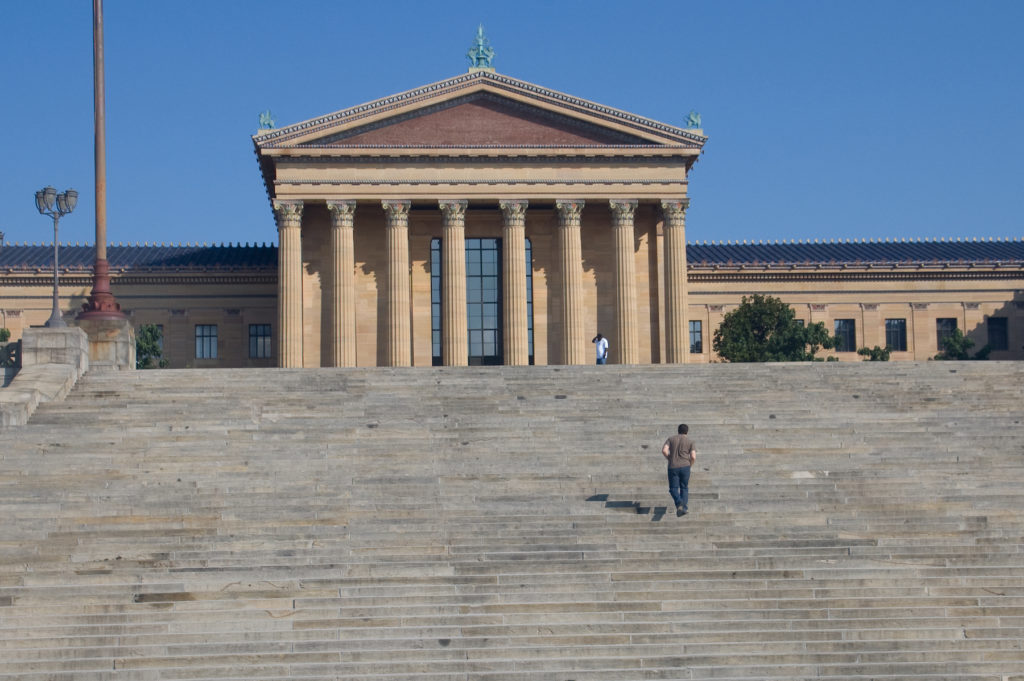Opinion
As Its Workers Organize, the Philadelphia Museum of Art Management Turns to an Infamous Anti-Union Law Firm
The law firm, Morgan, Lewis & Bockius, is known for fighting against a $15 minimum wage.

The law firm, Morgan, Lewis & Bockius, is known for fighting against a $15 minimum wage.

Ben Davis

Way back in 1981, the law firm firm of Morgan, Lewis & Bockius—better known as Morgan Lewis—was retained by the Reagan administration to help craft its strategy to break the PATCO air-traffic controllers union. That event is often remembered as the opening shot in an anti-labor offensive that has mauled the livelihoods of working people up to this day. For its supporting role in the Reagan Revolution, Morgan Lewis was paid $376,000, about $1 million in today’s terms.
Even today, Morgan Lewis is somewhat infamous as a player in advising big business on anti-union strategy. For instance, the firm helped McDonald’s craft its strategy to stop the “Fight for $15” campaign. In fact, at the very same time Morgan Lewis was pitching in to stop fast food workers from getting a $15 minimum wage, its own top lawyers were named by the Wall Street Journal as members of the “$1,000-Plus-an-Hour Club,” referring to the amount they bill.
Not so long ago, Morgan Lewis was in the news when Donald Trump nominated partner John Ring, co-head of the firm’s Labor & Employment Practice Group, to the National Labor Relations Board (NLRB). There, Ring has presided over rulings that, among other things, specifically make it harder for McDonald’s workers to organize. In November, the NLRB’s staff staged a protest against “management abuses” towards the agency’s own workers during Ring’s tenure.
I bring all this up because the context helps give the full weight to the following fact: Morgan Lewis is the firm that the Philadelphia Museum of Art is working with to deal with its employees’ effort to unionize.
Asked for comment, a museum spokesperson confirmed that it was using Morgan Lewis for advice: “As is customary, the museum has continued working with its longstanding outside counsel to help guide us through the unionization process as governed by the National Labor Relations Act (NLRA).”
On its own website, Morgan Lewis is pretty clear on what kind of “guide” it might be: “In addition to assisting employers during union organizing campaigns and related litigation, we help clients promote positive employee relations, avoid union penetration, and strategically shape bargaining units to minimize potential union organizing victories.”
The goal, in short, is neutralizing worker activism.
The PMA Union had achieved a “supermajority” of eligible workers who supported the unionization drive, meaning a yes vote was assured on the issue if it went forward promptly. The staff had therefore hoped that museum management would quickly and voluntarily accept the union.
Instead, workers learned on Monday via an all-staff email that the museum was disputing some of the points of the union’s filing, including the size and composition of the proposed bargaining unit. Of course, one of the services Morgan Lewis advertises is its ability to “strategically shape bargaining units to minimize potential union organizing victories.”
Now the museum will take these disputes to the NLRB—where the former head of Morgan Lewis’s union-busting arm is currently in charge—before letting the vote go forward.
To workers, this looks as if the museum is “stalling to give time to build up an anti-union campaign,” said Alex Kauffman, a member of the organizing committee and a post-doctoral curatorial fellow at the museum. “Morgan Lewis has said exactly what they do, and PMA is using that exact playbook.”
Morgan Lewis has deep ties with the museum. It is a Gold-level corporate supporter. Timothy W. Levin, a lawyer at Morgan Lewis who specializes in finance cases, is on the museum’s executive board.
The museum was already reeling from high-profile scandals over failure to act on sexual harassment complaints and abusive management, and was in “reset mode” trying to quell staff rebellion. The union drive in part came out of the solidarity between departments forged in that moment.
At the same time, the Philadelphia Museum of Art has yet to undergo widespread layoffs in response to the current shutdown. When my colleague Eileen Kinsella first reported on PMA’s unionization drive back in May, one worker was quoted as saying: “we’re very grateful for what the museum has been able to do for us and we’re excited to work in collaboration with upper management.”
What does this current bit of news say to me? That management can’t be trusted, and that the workers’ main impulse is correct: unionization can’t come fast enough.